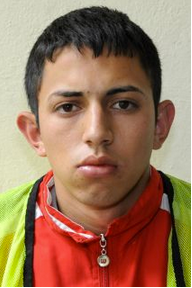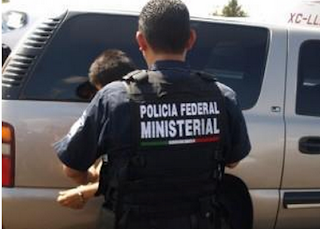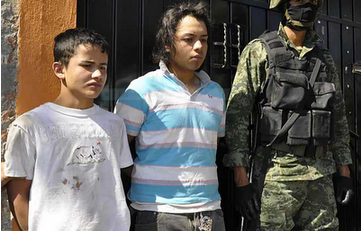Borderland BeatIf you want a great overview of Mexican Narco Study.. this is very well done.By Noel Maurer Revista Harvard Review
There is nothing new about organized crime. Nor is there anything new about criminal violence. What is new—at least for Mexico—is the scale. In Mexico, homicide had been falling steadily for a decade, from 17 per 100,000 in 1997 to a little under 10 in 2007.
Since 2007, the rate has steadily grown to 22 per 100,000, with several states in the north of the country spiking above 40. Violence appears to have peaked in the northern cities, but now also seems to spreading throughout the country.
The question, then, is why has violence spiked now? I believe the necessary condition was a change in business strategy prompted by changes in drug markets and the market for political protection in Mexico. The primary change in drug markets was the successful U.S. attack on Colombian mobsters, combined with an effective shutdown of the Caribbean drug route.
This opened the way for Mexico’s organized crime organizations—increasingly known by the unfortunate acronym of MOCO—to vertically integrate both upstream and downstream. It also opened the way for them to develop local drug markets within Mexico, since they now controlled more of the product. Vertical integration and horizontal expansion, however, meant a greater need for market intelligence (including the movement of rival shipments) and contract enforcement both within and without the organization.-Miguel Aleman left- The political change was the increase in political competition engendered by democratization. Democratization disrupted the mechanisms that made the drug trade an actual cartel (thus opening opportunities for violent competition) while simultaneously making it worthwhile for criminals to attempt to violently intimidate local governments.
The sufficient condition for the violence explosion, however, was the Calderón administration’s crackdown on the cartels. The crackdown drove up the costs of the drug trade, and caused the cartels to expand horizontally into new drug routes and new criminal markets.
Moreover, the arrests of cartel leaders caused internal organizations to break down, allowing specialized divisions (such as the Zetas or La Línea) to go into business for themselves. The result has been an escalation of violence and a widespread growth in extortion.
A History of Violence
Mexico’s first smuggling rings emerged as vertically integrated enterprises under political protection. As far back as 1916, in the middle of the Mexican Revolution, U.S. customs officials in Los Angeles reported that Esteban Cantú, the governor of Baja California, was selling leases to smuggle opium into United States.
Cantú didn’t last— he became involved in a bizarro-world attempt to cleave Baja from Mexico as an independent state, which led to his exile— but the governors who followed him continued their involvement with drugs.
Once the federal government of Mexico banned marijuana in 1920 and opium in 1926, they needed more government protection than before—and that protection was quite forthcoming from the old Partido Revolucionario Institucional (PRI) machine. Moreover, they relied on U.S. crime rings to market their product.
Smuggling soon spread away from Baja. In 1931, President Pascual Ortiz Rubio (who was actually not the true head of government at the time—that position being occupied by the Jefe Máximo de la Revolución, Plutarco Calles) expressed worry over “the increase in national and international narcotics trafficking along the rail line joining Mexico City and Ciudad Juárez.” He went on to state that he was sending three “secret agents” who were “currently in Torreón” to combat the traffickers.
The head secret agent, Juan Requena, sent back a report stating that Torreón was the “main center for narcotics trafficking in the towns linked by the rail line from Mexico City to Ciudad Juárez and for the international trafficking carried out in this city.”
It went on to say the main kingpin was a man of Chinese descent named Antonio Wong Yin, who was in contact with the mayor of Torreón (Francisco Ortiz Garza), a close friend of the governor of Coahuila (Nazario Ortiz Garza), and the head of the federal Army in the state, General Jesús Garza Gutiérrez.
(It was good to be a Garza!) He went on report that the traffickers “have a complete espionage service prepared to do anything.” At that point Requena was transferred to Los Angeles.
The next year, General Rodrigo Quevedo became governor. His brother became mayor of Juárez. They shot the head of the smuggling cartel there, who fled to Mexico City, where gunmen killed him in a tiny little park that used to be next to the Casa de Azulejos in 1937. That same year, the head of the federal Department of Public Health, José Siurob, called Juárez “possibly the most dangerous center where traffickers operate who ... defend their trafficking with gunfire.”
The Baja criminals were under the thumb of the Mexican government on one end (which controlled the violence needed to enforce contracts inside Mexico) and a group of Americans who both controlled the supply channels on the other. By 1947, Harry Anslinger, the head of the Federal Bureau of Narcotics, declared Mexico to be U.S.’s main opium supplier. He also accused state officials in Sinaloa (where it was grown) of being in the drug business, including Governor Pablo Macías Valenzuela.
Surprisingly, the Mexican press picked up the accusations. There must have been some sort of infighting between Macías and President Miguel Aleman (at left), because once the President made a trip to Sinaloa, the accusations stopped. Macías finished his term and became head of Military Camp No. 1 in Mexico City. The feds made a show of capturing one of the traffickers Macías was accused of protecting—Miguel Urías Uriarte—but he was son released.
Over the next three decades, heroin and marijuana smuggling grew as America’s drug habit took off. Opium was grown in Sinaloa, and the “narcotraficantes” began to move from the highlands to new subdivisions in Culiacán.
In 1975-85, under the name Operation Condor, the Mexican government sent an Army division into the Golden Triangle around the intersection of Sonora, Sinaloa, and Durango.
Operation Condor, however, wasn’t really about breaking up the drug trade as it was about establishing “plazas.”
A plaza did not refer to a public square, but rather the area under the control of particular political authority, who would monitor all the drugs passing through their jurisdiction.
Those controlled by traffickers who made payoffs would be allowed to continue.
The authority would then insure that the payoffs flowed through to the beat cops, soldiers, and low-level officials whose cooperation was needed.
With the new stability, the Mexican smugglers integrated backwards into production. The reason was simple: there are scale economies to be had in marijuana and opium cultivation. Miguel Ángel Félix Gallardo was particularly good at this: the El Búfalo ranch, raided in 1984, covered two square miles, employed 10,000 farmworkers at harvest time and held drying marijuana worth (in 2010 dollars) somewhere between $3.2 and $8.0 billion . The emerging “cartels” could not retroactively integrate into cocaine—that was produced in the Andes, not in Mexico—but as the United States succeeded in shutting down the Caribbean corridor (mostly by getting the Bahamas to agree to allow U.S. law enforcement to freely operate in its territory) more cocaine traversed Mexican territory
The agreement between the Colombian producers and the Mexican wholesalers was stable because the Mexicans lacked distribution channels in the United States. The Colombians sold cocaine to the Mexicans at one end of the value chain and bought it back from them at the other.
The “cartels” didn’t consider themselves to be particularly cartelized: as Félix Gallardo himself wrote in his diary, “In 1989, the cartels didn’t exist … there started to be talk about ‘cartels’ from the authorities assigned to combat them” (The diary can be found in Diego Osorno, El Cartel de Sinaloa [Mexico City, 2009, pp. 207-57]).
Félix was correct in the current sense of the word “cartel” as an organized crime ring, but wholesale distribution via Mexico was in fact cartelized in the technical sense.
Two mechanisms served to control the market: the Mexican government insured that there would be no fighting over possible routes inside Mexico, and the U.S. Coast Guard (with the full cooperation, it should be noted, of the Bahamian government and the de facto help of the Cuban one) insured that Mexico would be the cheapest route for cocaine transshipments into the United States.
The above business model collapsed in the 1990s because the U.S. government refused to quietly play its role and went after the Colombian-controlled distribution networks. The U.S. and Colombian governments took down Pablo Escobar in 1993. Soon, three Mexican organizations controlled the drug trade, and succeeded in seizing most of the rents from their Colombian suppliers
In Ciudad Juárez, a mid-level drug dealer named Amado Carrillo Fuentes took the opportunity of Escobar’s death to shift the traffic to his city. He also began to sell retail inside Mexico. Juárez became littered with “tienditas,” where drugs sold for less than a quarter of the U.S. street price. In theory, the tienditas were under police protection. In practice, the police functioned as just another gang. Homicide in Juárez jumped from 5 per 100,000 to a shade under 30 as Carrillo’s men tried to take control of the retail trade. A similar process occurred in Tijuana, taking up that city’s homicide rate.
The creation of a retail market combined with three other factors to move the border cities to a new, higher level of violence:
a large population of transient young men, an economy that offered few economic opportunities, and continuing connections with U.S. prison gangs that could not freely operate in San Diego or El Paso but could easily coordinate their activities south of the border from their American redoubts. Yet, outside of Ciudad Juárez and Tijuana, the rest of the country remained relatively peaceful.
A Strategy of Violence
![]() |
Osiel's Arrest |
The peace began to break down in 2005, when the Sinaloa Federation began to try to take control of the Nuevo Laredo plaza away from the Gulf cartel after the 2003 arrest of Osiel Cárdenas. Under the leadership of Joaquín “El Chapo” Guzmán and Arturo “El Barbas” Beltrán Leyva, the Sinoloans meticulously planned to seize the plaza.
They did not, however, realize that Cárdenas’s network of enforcers was fully capable of fighting back. The “Zetas,” originally a group of former Mexican special forces who had gone to work for Cárdenas, fought brutally to take control from the Gulf Cartel and keep out the Sinaloans.
What does it mean for a cartel to “control” a plaza? In short, it means two things: intelligence and enforcers (called “sicarios”) who can intercept such cargoes and (given good intelligence) punish those responsible. In addition, if there is a retail drug market, control means having a monopoly over sales.
Seizing control over a plaza is therefore a violent business, since it requires destroying the other cartel’s intelligence network. Violence is also useful to terrorize the other side. Since so many local cops were on cartel payrolls, federal and local police forces at times shot at each other.
After coming to office in 2006, the Calderón administration declared war on the cartels. There is evidence that the Calderón administration’s attack contributed to accelerating the explosion of violence. Melissa Dell, in a recent study of the effects of political change on violence in Mexico, found that whenever a PAN mayor was inaugurated, violence jumped by more than half.
Moreover, violence also jumps in the surrounding counties. (Mexico has no municipal governments as known in the United States; the basic political unit is the county; each county has an elected mayor.) More tellingly, female labor force participation and wages in the informal sector fell in all the affected counties.
A Structure at Bufalo Ranch Chihuahua
In a more direct test of a similar hypothesis, Eduardo Guerrero found that federal enforcement actions (drug seizures, crop eradication, dismantled meth labs, and arrests) all increased the probability of homicide in the county. The interpretation of the results is based upon the assumption that PAN mayors are able to call in federal resources to combat drug trafficking in their counties. The application of federal power disrupts the operations of the local cartel—which depend, crucially, on intelligence in order to control their territories.
The cartels then react to the higher costs that they face in two ways. First, they displace their smuggling activities to nearby routes. Inasmuch as those routes are contestable territory, it triggers inter-cartel violence. Second, as costs rise in the trafficking business, the cartels move into other profit sectors: among them protection rackets aimed at small businesses.
As rents on small businesses increase, wages and female labor force participation fall (the latter under the unfortunately but probably true assumption that women are the last hired and first fired). The cartels also likely divert more resources into narcomenudeo—local retail sales.
Research by Viridiana Rios indicates that the breakdown of PRI control had an effect on cartel strategies, even independent of Calderón’s crackdown. Is there any evidence that the government’s efforts have in fact raised the costs of trafficking drugs to the United States? The answer to that question is yes.
After a long period of decline that took retail cocaine prices down by 80% since 1981, the price of cocaine started to escalate in late 2007, doubling by the middle of 2008 and remaining at that level thereafter. The implication is that the supply of drugs to the U.S. market (and the cost of getting them there) increased dramatically over the first few years of the Calderón crackdown.
Outsourcing Violence
The cartels have branched horizontally into new businesses, particularly extortion (including kidnapping) and human trafficking, but this change in strategy has been accompanied by a disturbing change in organization.
First, the cartels themselves have fragmented under pressure from the federal government. Second, the cartels have increasingly outsourced various functions to local gangs. The rationale follows the same logic as business outsourcing.
First, the smaller organizations often have a comparative advantage in a specialized function, be it enforcement, transport, retail distribution, or marketing. (The Zetas, most prominently, were born as the enforcement arm of the Gulf Cartel.) The gangs also have local knowledge. In addition, they give the cartels flexibility: there is no need to maintain “a bloated bureaucracy of gunmen” (in the words of Eduardo Guerrero). Finally, gang members, when arrested, cannot give away information about internal operations, for the simple reason that they are not internal to the cartel.
The problem, of course, is that the cartels cannot always maintain control over their outsourced branches. When top leaders were arrested, the heads of these secondary organizations were tempted to go their own way.
Similarly, when federal enforcement created an opportunity (by, say, shutting down a smuggling route or a kidnapping ring) the leaders of the secondary organizations engaged in entrepreneurialism.
The cartels became less stable, and needed to use violence to control challenges from their outsourced arms as well as from other cartels. In the long run, fragmentation will lead to less violence, as small gangs lack scale economies, but the transition will be long and bloody.
Calderón’s crackdown may have triggered the increase in violence, but the seeds were set far before then. The correct MOCO business model is certain to provoke violence, particularly as the cartels disintegrate.
Moreover, cocaine consumption and prices in the United States seem set to continue their secular decline, which will push more criminals out of trafficking and into other lines of work. In the long-run, Mexico will likely get a handle on its law enforcement problem as the economy grows and the MOCOs disintegrate into street gangs… but without a proactive strategy, the long-run could be some time away.












































